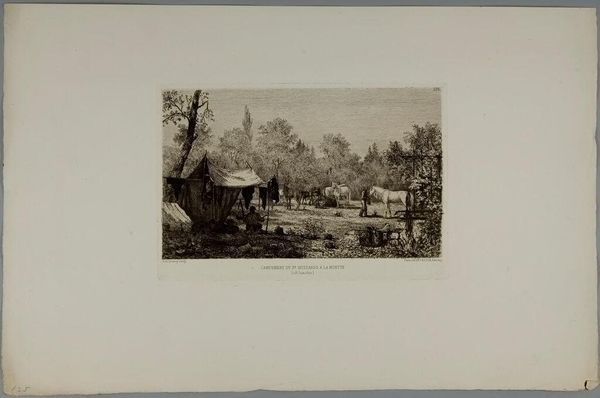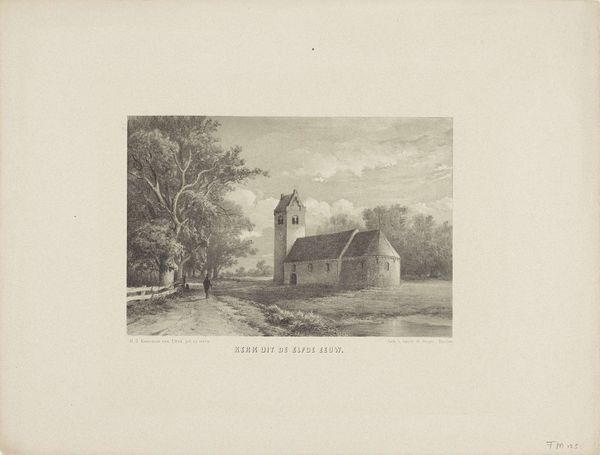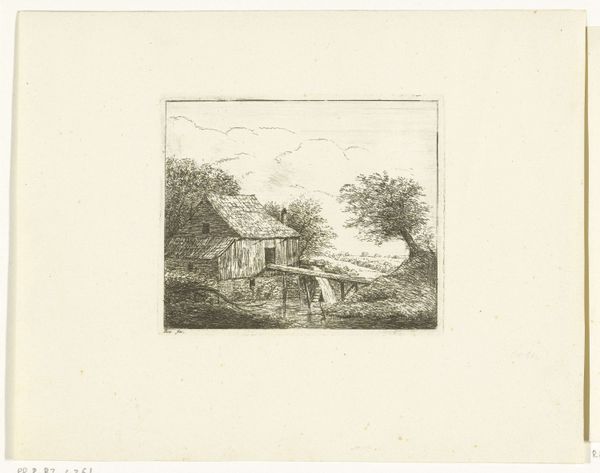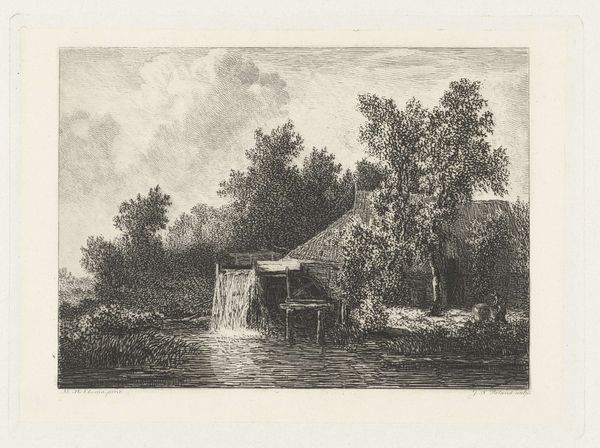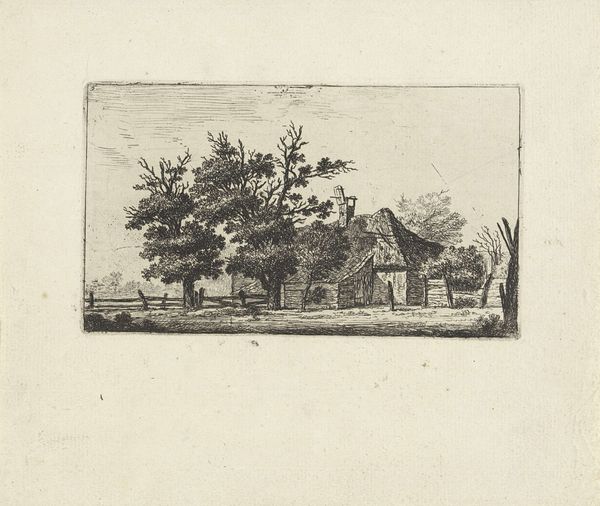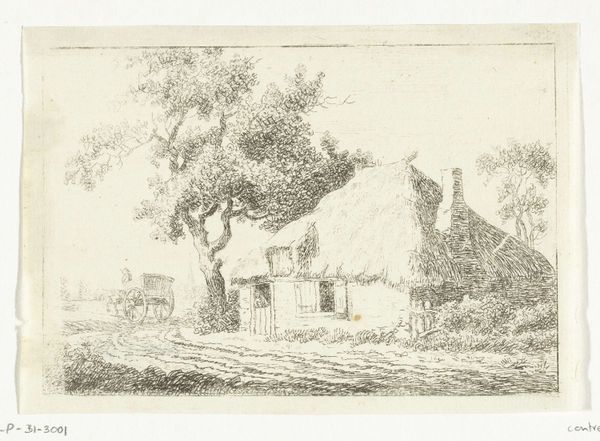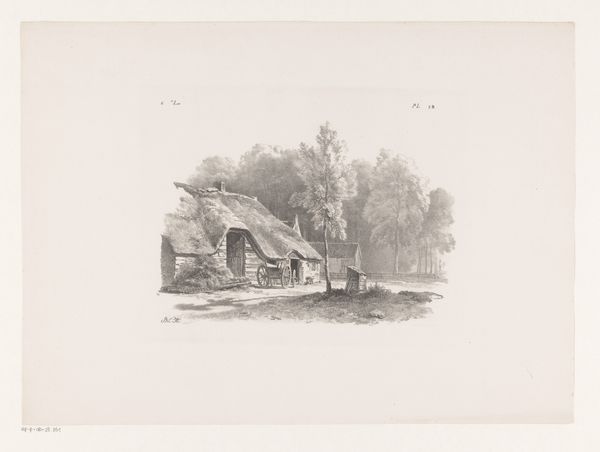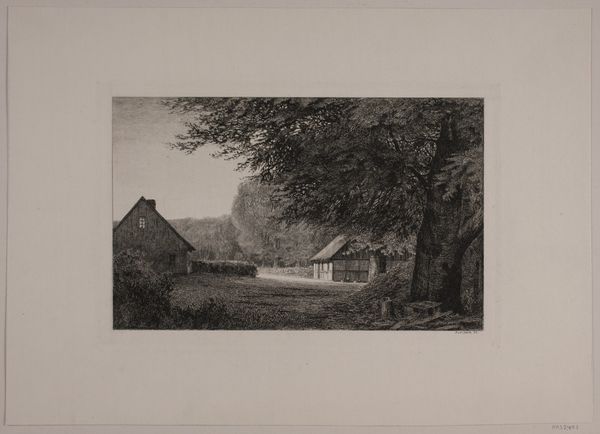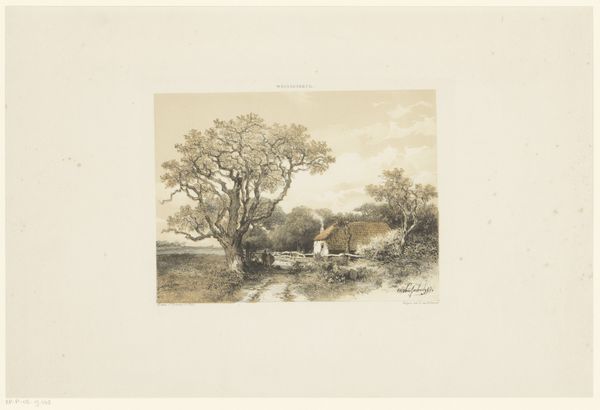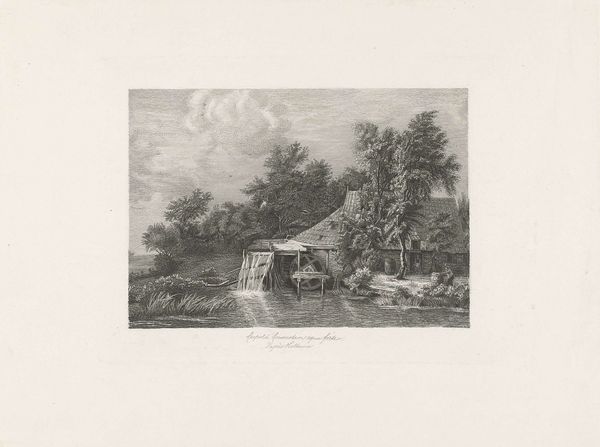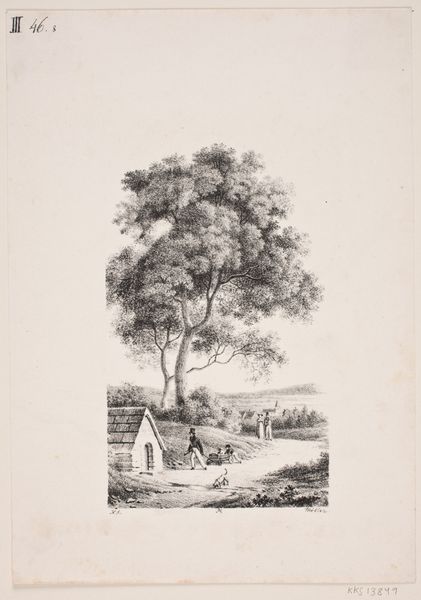
drawing, pencil
#
pencil drawn
#
drawing
#
dutch-golden-age
#
pencil sketch
#
landscape
#
pencil
#
pencil work
#
realism
Dimensions: height 292 mm, width 375 mm
Copyright: Rijks Museum: Open Domain
Hendrik-Dirk Kruseman Van Elten made this etching titled "Watermolen en bakoven, 13e eeuw" which translates to "Watermill and Oven, 13th century" in the late 19th century. The etching process is a labor-intensive printmaking method, reliant on acids and physical pressure to transfer an image onto paper. Here, we see the interplay of finely etched lines, and the tonal variations achieved through the controlled application of acid, create a detailed and atmospheric image. Van Elten’s technique is meticulous. The textures of the mill, the oven, the water, and surrounding landscape are rendered with careful attention. The social significance of this image lies in its depiction of pre-industrial labor. The watermill and oven represent essential technologies for processing grain and baking bread, activities central to community life and sustenance. The amount of work involved in the production process, both in the depicted scene and in the etching itself, highlights the value of skilled labor and traditional methods. Understanding the materials, the making process, and the context in which the artwork was created allows us to bridge the perceived gap between fine art and craft, enriching our appreciation.
Comments
No comments
Be the first to comment and join the conversation on the ultimate creative platform.
